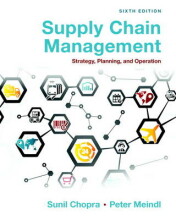Managing Economies of Scale in a Supply Chain
4 important questions on Managing Economies of Scale in a Supply Chain
Name the 4 components of which Ordering Cost exists
- Buyer time, incremental time of the buyer placing the extra order. Only included if the buyer is utilized fully.
- Transportation Cost, most of the time fixed regardless size of order.
- Receiving costs, regardless size of the order receiving costs, like administration work, quantity dependent receiving costs not included here.
- Other costs, costs unique to each situation, only if they are regardless quantity order
Why is it often convenient for a company to order a lot size close to the EOQ rather than the precise EOQ?
With how much does the optimal lot size increase, when the demand increases with a factor k?
- Higher grades + faster learning
- Never study anything twice
- 100% sure, 100% understanding
Why would you aggregate replenishment across products, retailers or suppliers in a single order?
The question on the page originate from the summary of the following study material:
- A unique study and practice tool
- Never study anything twice again
- Get the grades you hope for
- 100% sure, 100% understanding































